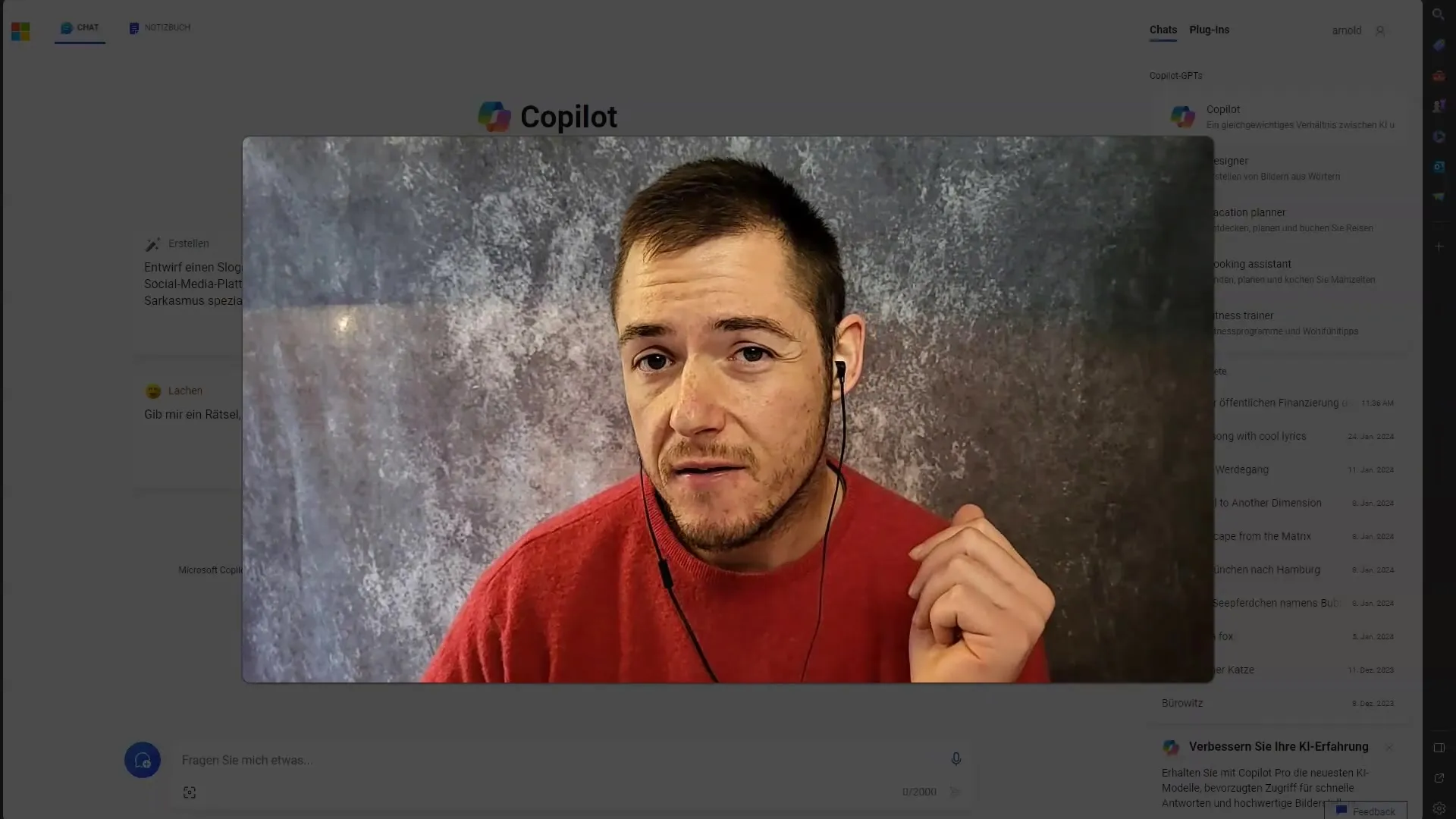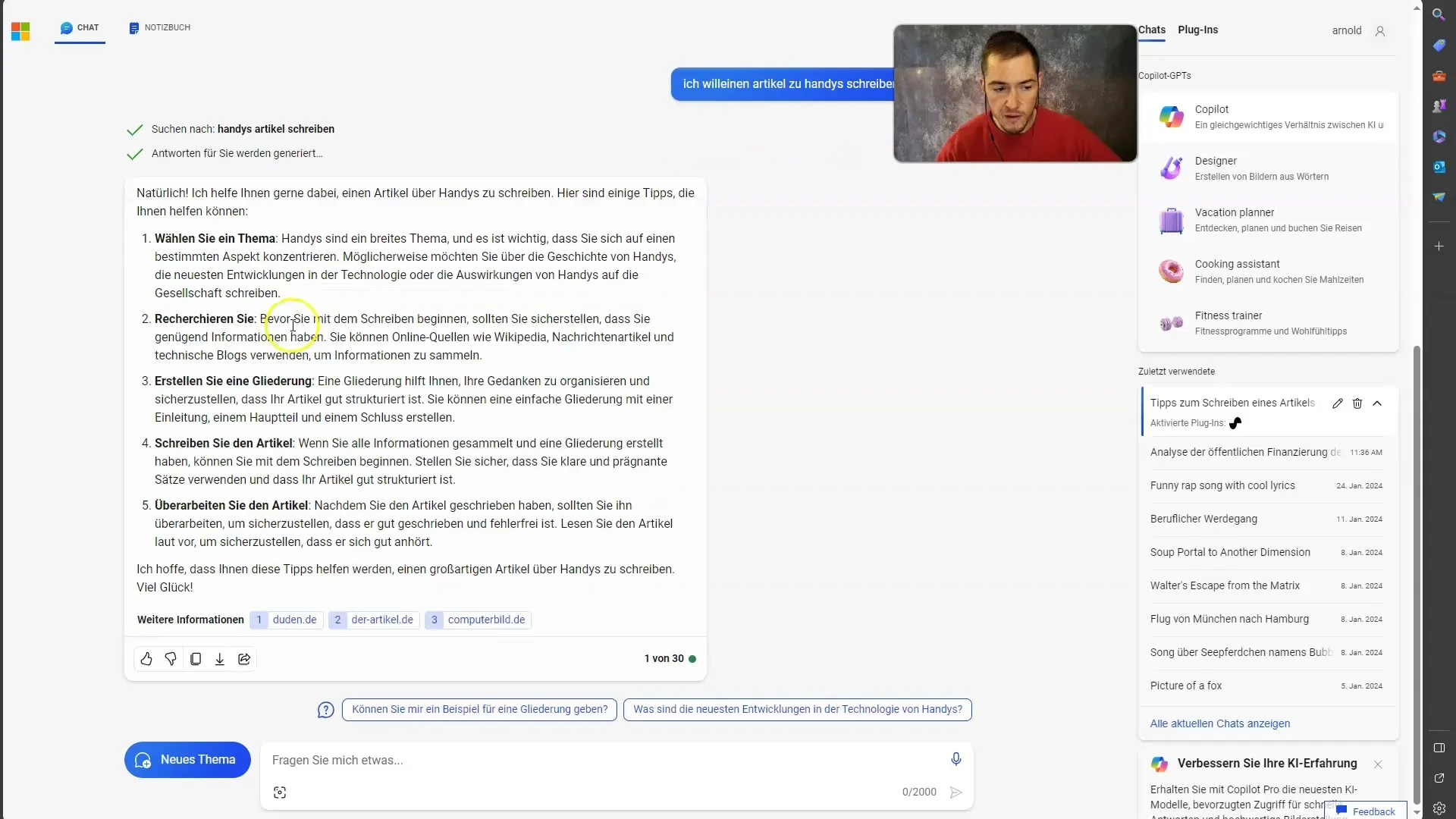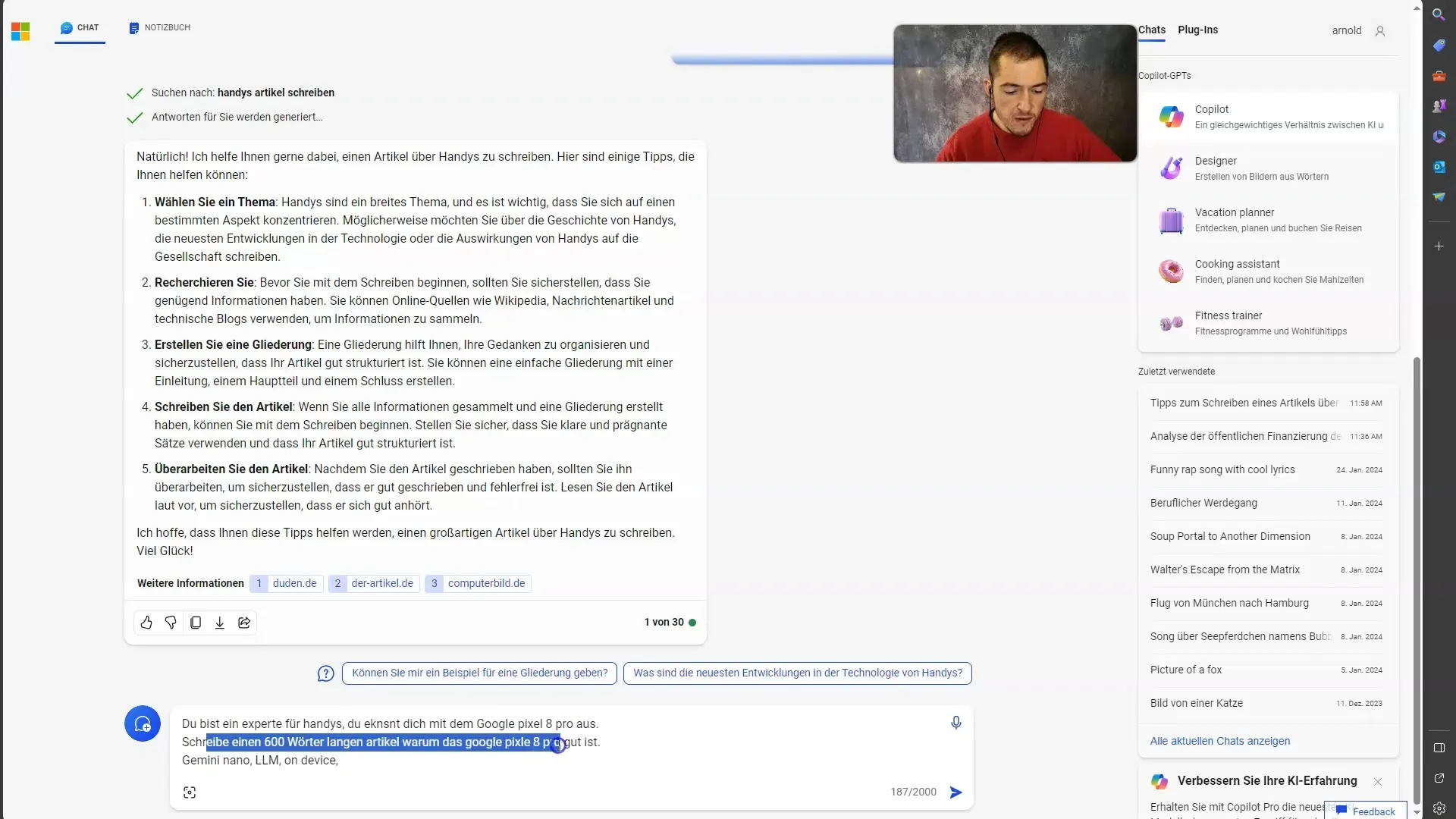Artificial Intelligence, especially when using Large Language Models (LLMs) like Microsoft Copilot, understanding Prompt Engineering is crucial. A good understanding of the prompt you send to the model can make the difference between a helpful and a useless result. In this guide, I want to introduce you to some essential techniques of prompt engineering, in particular, semantic association, structured prompts, and roles. These concepts will help you formulate effective prompts that maximize the performance of Microsoft Copilot. Let's dive right in without further ado!
Key Insights
- Prompt Engineering is the key to achieving effective results with Microsoft Copilot.
- Semantic association allows the model to better understand contextual relationships.
- Structured prompts help to clearly communicate specific requirements.
- Role prompting provides the model with specific instructions to define the context and deliver better outputs.
Step-by-Step Guide
1. Understanding LLMs
Start with a basic understanding of large language models. These models can expand or summarize texts. You either provide a few words and receive a detailed response, or you provide very detailed information, and the model compresses it. The essence is that they work based on good prompts.

2. Example of a Poor Prompt
To better understand the concept, let's look at an example of a poor prompt together. Imagine you want to write an article about phones and phrase it like this: "Write me an article about phones." This prompt provides the model with almost no context, making the response mostly unsatisfactory.
3. Enhancing Context
A more effective approach is to provide the model with more context. Focus on a specific aspect of phones, such as the "Google Pixel 8 Pro." By focusing on a specific topic, you increase the likelihood that the model will provide valuable information.

4. Using Structured Prompts
Structured prompts are an excellent way to clearly communicate your requirements. For example, you could say, "You are an expert on phones. Write a 600-word article on why the Google Pixel 8 Pro is good." The prompt clearly indicates your expectations, and the model has enough information to generate a comprehensive response.

5. Defining Roles with Role Prompting
A particularly useful method in your prompt engineering is role prompting. Here, you define a role for the model to extend its perspective. When you state that the model is "an expert on phones," it will filter out specific information and provide you with an output based on this expertise.
6. Integrating Keywords
To give your prompt even more depth, you can add keywords that are helpful in generating the output. In our example, adding terms like "Gemini Nano" and "on-device" could help the model expand the context and find more relevant content.
7. Ensuring a Specific Target Audience
Also, consider who the article is intended for. Is it for tech enthusiasts, general readers, or a very specific audience? The model can adjust its response accordingly and change the writing style. This can also be noted in your prompt so that the model knows how to formulate the information.
8. Feedback and Finishing Touches
After formulating your prompt and the model has generated an article, review the result. Is it what you desired? If not, revise your prompt, add more context or specific requirements, and try again. The process of prompt engineering is iterative and sometimes requires multiple attempts.
Summary
In this guide, you have learned how important Prompt Engineering is for the successful use of Microsoft Copilot. By understanding semantic association, structured prompts, and role prompting, you can significantly increase the efficiency of your inputs. Make sure to provide your model with the necessary context to achieve high-quality results. Experiment and refine your prompts to get the best output for your needs!
Frequently Asked Questions
What are the basic functions of large language models?Large language models can expand and summarize texts.
Why is context important in a prompt?Clear context leads to higher quality and more relevant outputs.
What is semantic association in Prompt Engineering?Semantic association allows the model to understand associative connections and deliver more relevant content.
How can I effectively use structured prompts?By clearly formulating specific requirements and the desired output.
What is role prompting?Role prompting defines a role for the model to clarify the context and enable better answers.


